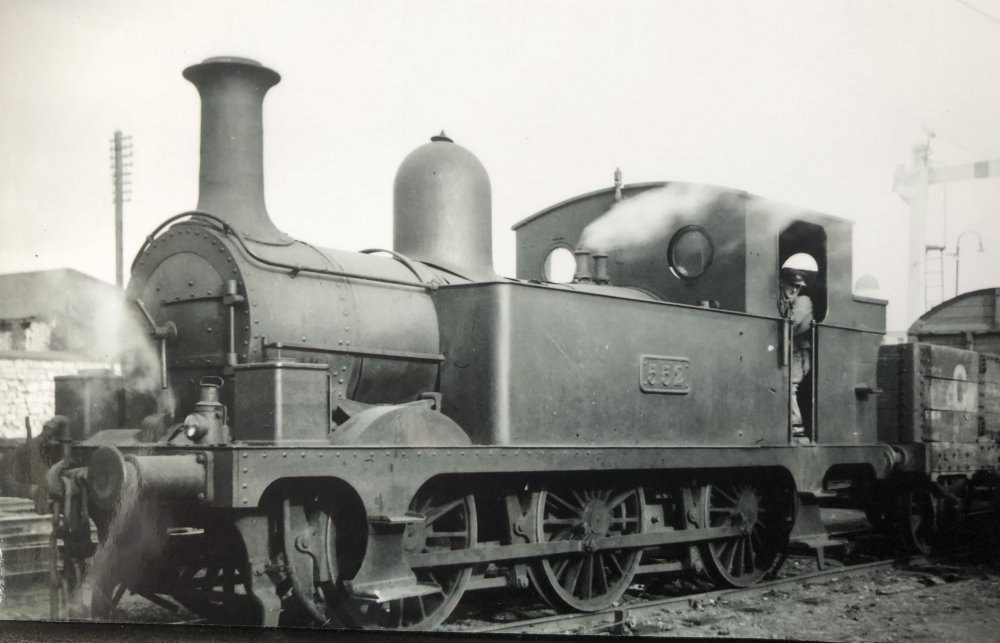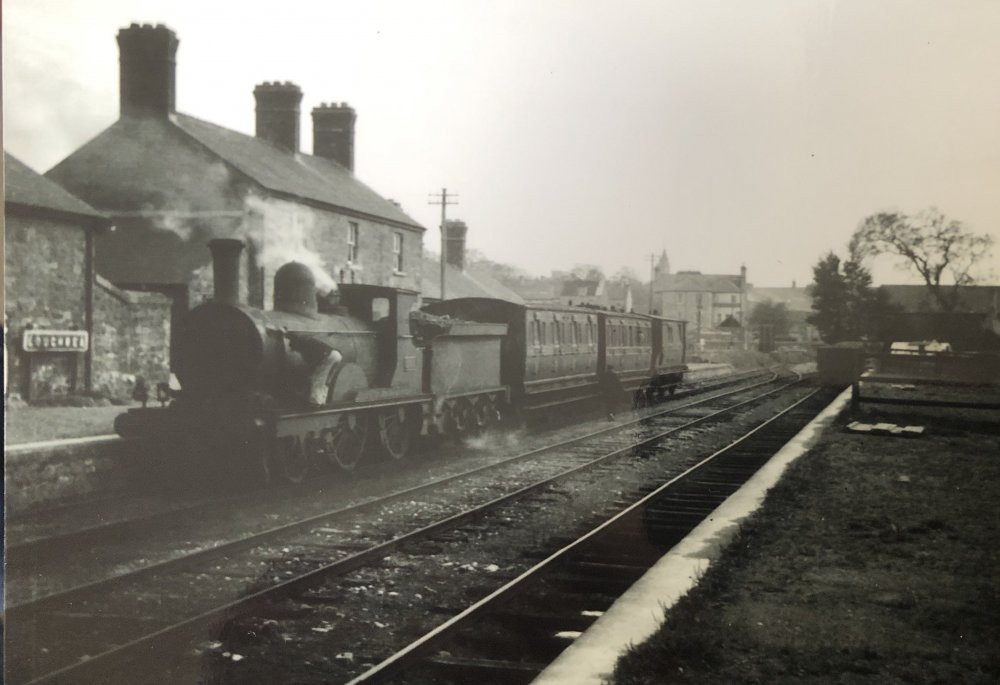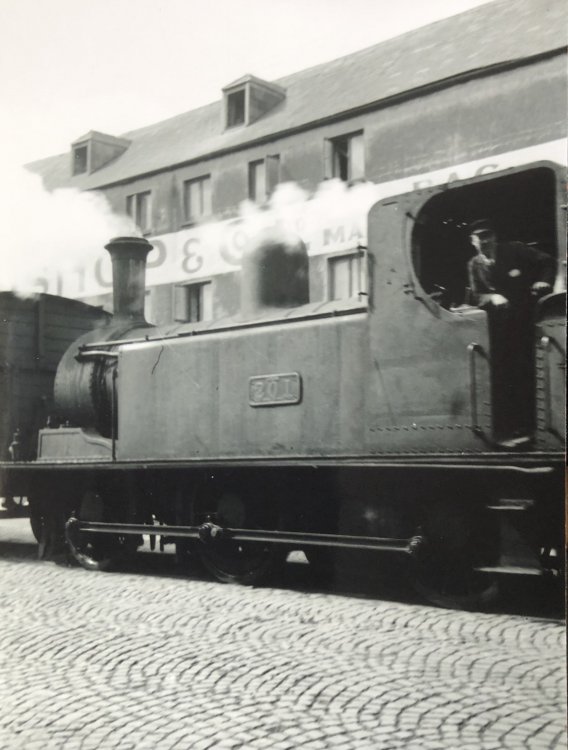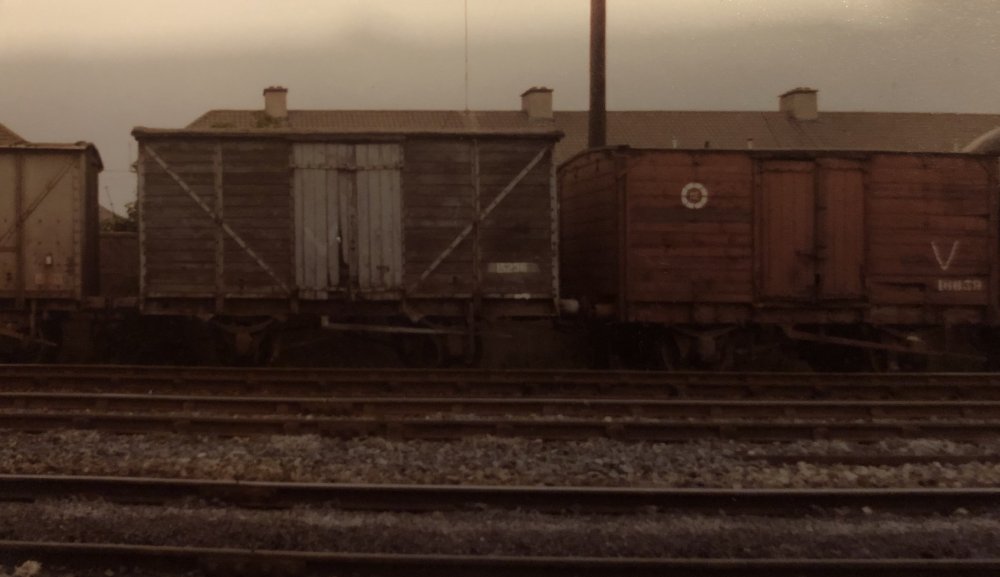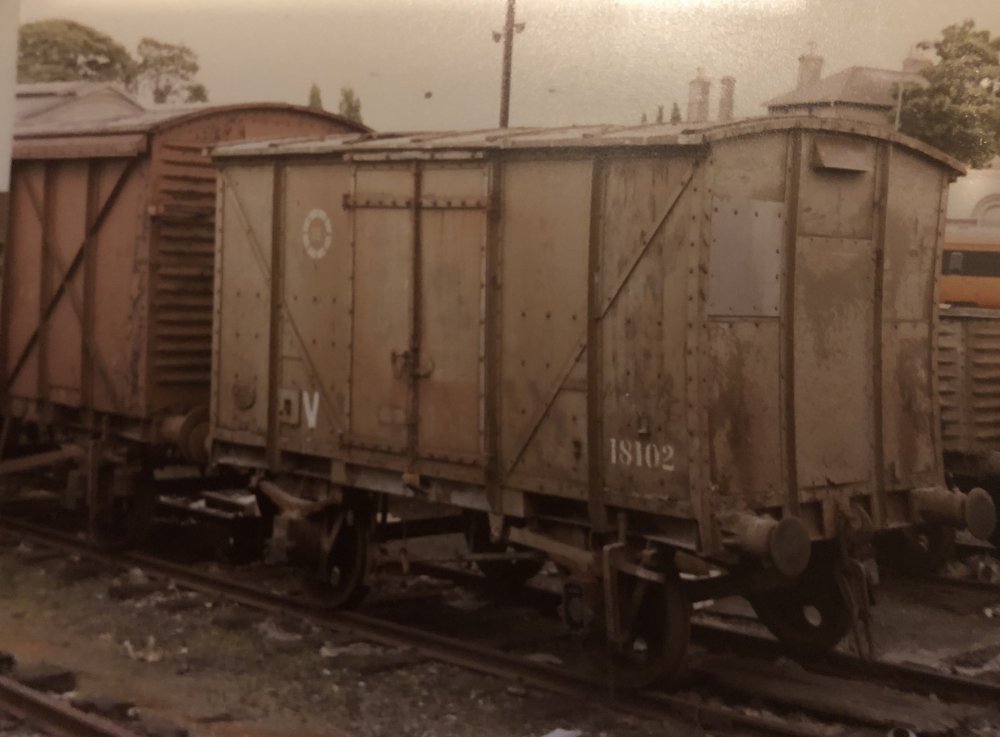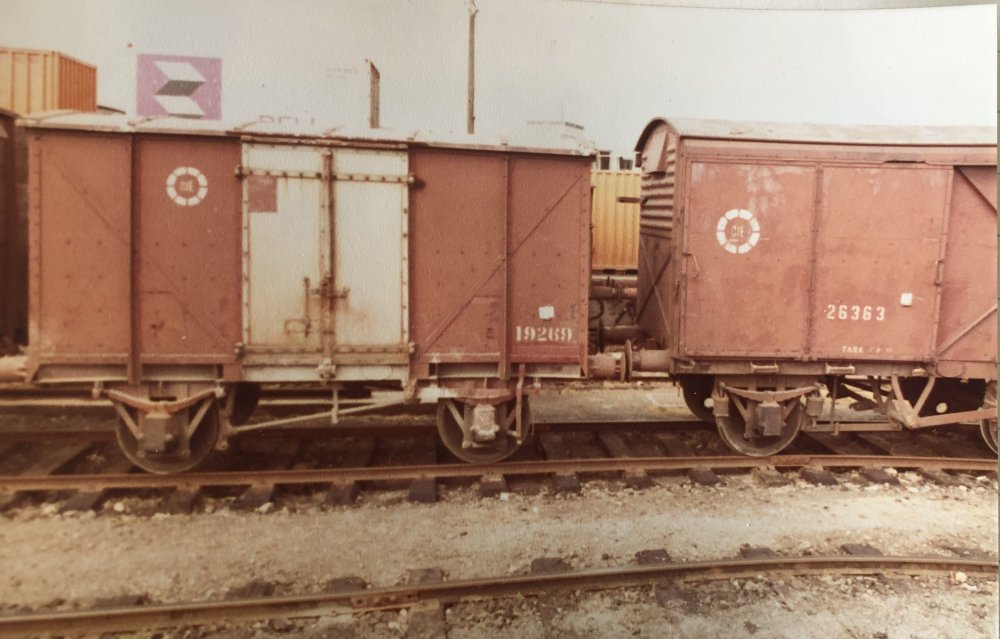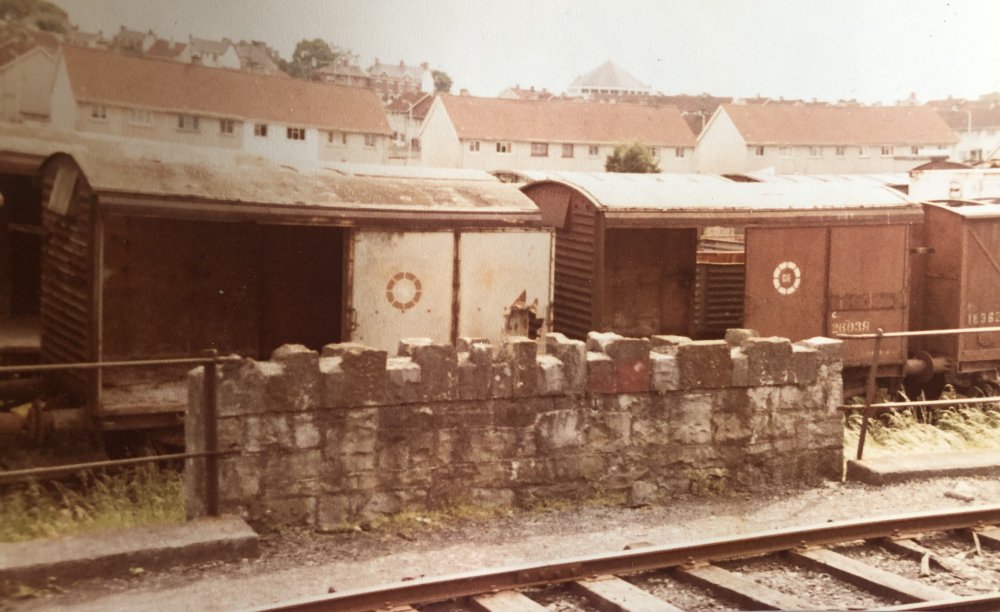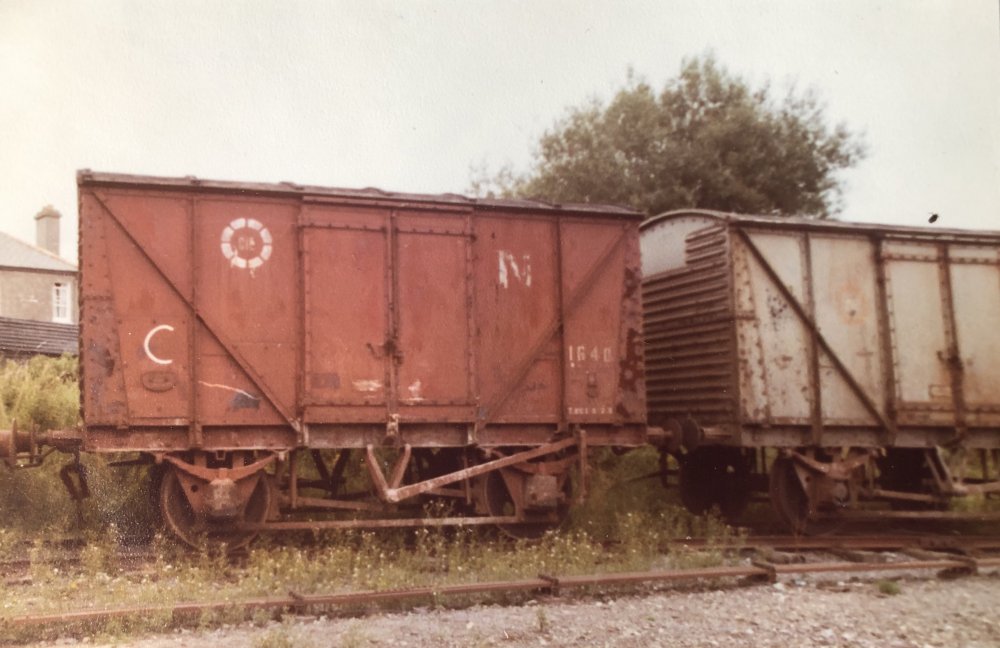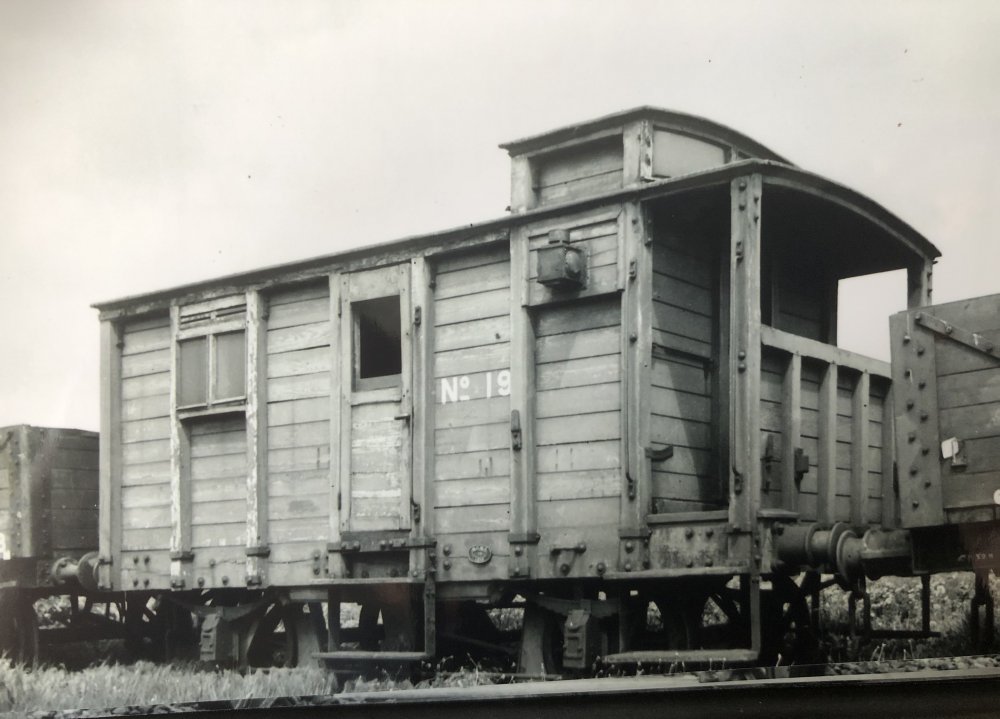-
Posts
15,831 -
Joined
-
Last visited
-
Days Won
393
Content Type
Profiles
Forums
Events
Gallery
Blogs
Store
Community Map
Everything posted by jhb171achill
-
Folks, has anyone ever seen one of Shapeways' 3D prints of Irish 00 scale stuff, in particular the three MGWR six-wheelers that they offer? I am not sure to what extent the illustrations on their website are CAD drawings, or actual casts / prints, but some look very good indeed, while others are clearly coarse to the extent of Lego toys. Also, if purchasing one of their six-wheel coach designs, any advice about a suitable chassis - presumably scratch-building one is probably the only option?
-
This is the correct colour, shape, dimensions and orientation for ALL circumstances, other than those outlined below. It is a photo of an actual one, and on actual CIE paint. ____________________________________________________________________________________________________________________________________________ Authentic use of CIE “Flying Snail” emblem 1945-62 Logo reversed on DRIVERS’ SIDE ONLY (Right Hand Side) where “reversed” is noted in 3rd column. Normal, as per avatar on left of this post, on other side. In other words, top bit pointed forward on each side. In all cases the light green logo was lined in gold, unless otherwise stated Type Colour of “Snail” Facing: Notes Steam Tender Locomotives Reversed RHS only Logo never carried on loco, only on tender. Most but not all tenders carried them. Steam Tank Locomotives None carried Diesel “A” Class Some entered traffic without any, but had the cut-out metal ones added later, painted light green. A1 may have entered traffic with a silver one, but light green was the norm. Logo not lined in gold, but a cut-out metal shape painted light green. Diesel “B101” Class None carried Diesel “B121” Class Lined in black Logo lined in black Diesel “C” Class None carried Diesel “F” Class (Narrow gauge) None carried Diesel “G601” Class None carried Diesel “G611” Class None carried Carriages Lt. green when carried See note below table Railcars A few railcars in the later post-’55 light green livery did not have “snails” There may have been examples of an offside “reversed” on some. Certainly, most had normal logo on BOTH sides. Wagons, vans etc. White (wagons always grey) 1945-51 or so, light green painted on. After that, painted white. After c.1959, stencilled white rather than painted. By the time wagons started being painted brown, the “snail” was gone some eight years, so no brown wagons ever had it. Departmental stock See note… On some stock, none carried. Others, white logo painted on Buses (single & double deck) Reversed drivers side only Once the red / cream and navy / cream bus liveries appeared in ’62, a few were for a short time seen with white “snails”, especially in and around Cork. Touring coaches (grey and yellow) Lined in white Reversed drivers side only Logo lined in white Road lorries Reversed drivers side only Canals & Shipping (Aran Island Ferry) None carried Dublin Trams Howth Trams None carried Howth Tramway closed after less than a year in CIE ownership – all trams retained GNR livery to end Note regarding carriages: In the older dark green livery, as seen approximated on Bachmann coaches, the transfer was always lined in gold. After 1955, many new carriages had the same, but some had an unlined light green “snail”, whereas other had none at all. In later years, several secondary carriages, especially in West Cork, were in the older dark green, unlined, and with painted light green “snails”. Common myths: 1. Steam engine tenders – either in green, normal grey, or latter-day black (for some), there was never a yellow or white “flying snail” on anything. The cabside number was painted a light yellow colour, but the “snail” was just the standard bus / coach transfer as seen in avatar on left. It is possible that the application of non-authentic yellow “snails” to preserved 184 and 461 in the 1990s gave rise to this idea. 2. White on narrow-gauge vehicles. The C & L stock in particular was allowed by CIE to get into a most appalling state of dishevelment, with many vehicles at closure not having seen a paintbrush since 1945. The pale green tended to fade (as did the green), and the emulsions in colour slide film in those days, and the fact that most colour pics of the line were taken in march 1959, in winter lighting, just a few weeks before it closed, have all given rise to understandable assumptions that things were white on dark green. Not so; same transfers as everywhere else.
-
MGWR No. 552 in 1938 A final look at things Midland for the time being. Tomorrow we’ll head to Enniskillen! I believe this was taken at Broadstone but I could be wrong; 1938 is the year anyway, the year after Broadstone closed as anything but a loco shed.
-
Yes, there seems much confusion..... it’s simple enough, in reality, as you know!
-
201 was blown up in 1973 - I posted a pic of its remains recently. 210, 217 and 231 (now preserved at Downpatrick) were withdrawn in 1983. The rest were all 1984, 5 and 6. The following six were sold to NIR, and their dates are as follows: Date built CIE No. NIR No. Withdrawn Actual Date "Stopped" 1957 C216 104 1995 1994 1957 C218 105 1995 1993 1957 C227 106 1995 1995 1957 C228 107 1993 1987 (May not have been used much at all by NIR) 1957 C230 108 1995 1994 1958 C234 109 1993 1987
-
They were much the same, Wexford70. The only real difference was that usually they had company initials stamped or stencilled on them. The GNR tended to paint locomotive numbers on them too - they presumably tried to keep a set with each loco.
-
It will say something to the effect "ONLY TO RUN IN PASSENGER TRAINS". For modelling purposes, it is painted the same brown as used on carriages, though without lining. Very pale grey (white lead) roof, black chassis and drawgear. The tiny lettering and "M G W R" will probably be pale yellow.
-
BTB, you were asking about your pic of the A class above - the makers have put it the wrong way round. Easily remedied with transfers!
-
They were never, ever white on anything other than wagons, nor were the lining bits white. CIE used a transfer, and they were all as the logo thing I use on the left hand side of what you're reading - that's a real one, which is currently in Enniskillen Railway Museum. There's one in the Malahide model museum too, which will eventually be displayed on the wall somewhere. The transfers were light green ("eau-de-nil"), lined in gold. although I am aware of at least one coach on the West Cork system that had them painted. Other than the exceptions mentioned above, they always faced the way you can see on the left. In later days, especially on old stock about to be withdrawn, paintwork and transfers became worn and weathered. The Cavan & Leitrim in particular, due to the GSR's short sight economy in demolishing every carriage shelter on the system, ended its days with rolling stock in an absolutely disgraceful state of filth and tattiness. On stock as neglected as this, lining and / or "flying snails" often got so badly weathered and faded that it looked whitish; the emulsions in some colour transparencies of the day are not kind to green shades after decades in storage, so colour slides nowadays are impaired. I have seen some among Cyril Fry's slides where's a green B101 appears to be in shades of pink and purple. When CIE tok over from the GSR in 1945, "snails" on wagons were even painted light green, but this reverted to cream/white in the 1950s. You mention a "narrow gauge forum" - is there much Irish stuff on it? As per the little logo to the left of this, always, on all diesel locos. Opposite way to this ONLY on ONE (drivers) side of the following: - Road vehicles (buses & trucks) - tender of steam engine I like your description as a "cannon"! Using that analogy, on all diesels, carriages and wagons, cannon points left, without any exceptions! Buses, trucks and steam tends, it points right ONLY on driver's side!
-
The "bible" (McMahon & Clements) makes a mention of use in or around Dublin also. Occasionally, they appear to have also made rare appearances on passenger trains in West Cork. But of course, the Cork city area does seem to have been their main home. Attractive little things, I thought.....
-
True, but I hadn't mentioned a G2.....!
-
ANOTHER interesting Midland brake vehicle! In addition to today’s “from the catacombs” photo of a GSWR tank loco in Cork, here’s the branch train at Loughrea in the 1938. Loco, first class coach, third (ex-second).... so what exactly is that yoke on the rear?
-
102 was a J15. This is 201, of the 201 class. Ten were built between 1887 and 1901 as shunting engines, designed by Ivatt. They all lasted to the late 1950s, so are suitable as models to mix and mingle with A, C, E401, D, G601 and B101 class diesels, as well as laminate coaches and AEC railcars, among other things. While this pic was taken in 1939, 201 was the last to survive, still working in Cork until withdrawal in 1963.
-
They look very realistic.
-
-
I would recommend joining the IRRS anyway, Victor, even before you come to Ireland. Several issues a year of their "Journal" which contains records of what is "current affairs" on the railways, going back to when the Society was founded over seventy years ago. It also contains historical articles and features. The Society published a few books of its own - picture albums - some years ago. One featured the MGWR. I have a copy I could lend you, but I'd need it back eventually. It is possible they might have a copy if you contact them via their website. Other writings on the Midland would be "Midland Great Western Railway" by W E (Ernie) Shepherd and the late Padraig O Cuimín's "The Baronial Lines of the MGWR" which is about the Ballinrobe and Loughrea branches. When he wrote it, the Loughrea line was still open, though not for much longer, but he brings it up to date - and a re-write of this book will be forthcoming in a couple of years which will bring it up to closure and beyond. If I may mention the thing I did on the Achill branch, "Rails to Achill", and "Rails Through Connemara" which is now with the publisher - it was due to hit the shelves sometime between now and June, but the virus has stymied that.... it'll be out when it's out! Many articles in the IRRS deal with matters Midland, and in order to fully understand their locomotives, an absolute must, albeit not a cheap one, is "Locomotives of the GSR", the definitive "bible" of GSR / CIE steam locomotives, by Michael McMahon and Jeremy Clements.
- 309 replies
-
- 3
-

-

-
- mgwr
- 21mm gauge
-
(and 1 more)
Tagged with:
-
In the first pic, the left hand one is of late GSR, or more probably early CIE origin. The one on the right, the inside frame one (brown) is one is a series built at Inchicore in the mid 1930s and designed by jhbSeniorx2. Examples of these were still in traffic into the 1970s. I had a chance of getting one at one stage, but I had nowhere to put it! Pics 2 & 3 are standard CIE "H" vans built in the late 1950s. In pic 3, the one on the right is an early '60s "palvan", as are the two in the next pic. In the last pic, it's two ex-GNR vans, dating from 1954 - very much the GNR equivalent of CIEs H vans, and mostly built for Drogheda cement traffic, but widely used everywhere.
-
-
My understating is that the train loco of the goods did the shunting. So a G2 or J18 would be just right! As others suggest, a good start for 21mm DCC, or "0" scale, without mortgage-level expense. I often thought that Fintona would be another such - possibly on the basis that it's a few years later and the passenger train is a single-unit railcar to Omagh, like the old Gardner (was it 101?) which ended its days on Derry - Strabane locals.... if the INW had made it to 1967, you've a CIE 141 or a "C" coming in to shunt, or a "Jeep" or 00 Works "UG"...... Dream on, jhb171.......
-
Regarding the green for the MGWR brake vans, no certain info seems to have survived as to the shade, however, I recall being told - possibly by Bob Clements but I do not remember - that it was a "mid" green, so the model above would be certainly good enough for me. I have today been able to date that picture of the MGWR van above. It was taken in 1939, by which time it STILL hasn't been repainted in GSR markings. This means that it has not seen a paintbrush for at least fifteen years. Despite that, apart from some obvious signs of peeling, it appears to be in pretty good condition, leading me to think it was probably repainted last just as the Midland was becoming the GSR. This, also, would explain the lack of company markings. Mind you, to be obsessively pedantic, it still doesn't explain why "No." is in front of the number - this was not a normal MGWR trait. The green colour on guard's vans is believed to have not survived "austerity" and other livery changes in 1918, so it is probable, or at any rate possible, that it is grey. I'm just thinking I'll put that pic in the Clifden book... will ping it to the publisher now, and he will silently curse me for upsetting the page layout......!
- 309 replies
-
- 1
-

-
- mgwr
- 21mm gauge
-
(and 1 more)
Tagged with:
-
Very much so. I my Achill book, there's a picture of a DSER wagon at Achill, and I saw some pics in West Cork recently showing two GNR vans in an up goods train from Bantry or Skibbereen heading towards Cork. You don't get any further away from the GNR than that!
- 309 replies
-
- 2
-

-
- mgwr
- 21mm gauge
-
(and 1 more)
Tagged with:
-
Midland Great Western Van No. 19, photographed by Senior in 1939. Location unknown. I am puzzled a bit - presumably there’s an “M” after the number by this stage? It can’t be seen, though, and the thing carries neither “G S” nor “M G W R”. I am assuming it’s in Midland markings, as there was no “No.” in front of a number on a GSR-marked vehicle. Then again, the MGWR didn’t either! At first I thought it was an SLNCR vehicle, but for that line one would expect the number on the end too, and “SLNC” on the side. And you can see the cast-iron MGWR number plate, though even THAT is not typical!
- 309 replies
-
- 4
-

-

-
- mgwr
- 21mm gauge
-
(and 1 more)
Tagged with:
-
Looks interesting indeed, Edo!
-
A veritable treasure chest indeed!
- 309 replies
-
- 2
-

-
- mgwr
- 21mm gauge
-
(and 1 more)
Tagged with:
-
The Alphagraphix stuff does make a nice low-cost option, and contains many unusual prototypes, as well as things that aren't otherwise available much. However, beware of liveries - many are inaccurate, some considerably so! Not knocking it though, as I say some nice stuff. Probably the solitary company left on the entire planet that does EVERYTHING by "snail mail" and has no website or email address!
- 309 replies
-
- 2
-

-

-
- mgwr
- 21mm gauge
-
(and 1 more)
Tagged with:
.png.c363cdf5c3fb7955cd92a55eb6dbbae0.png)

